Today’s dispatch is an encore presentation originally published on June 25, 2022. It’s the fourth story featured on LAST CALL among the hundreds published since then that paid subscribers can access in the archives.
I wanted to share this today because it’s a favorite story of mine, one filled with friendship, coincidence, tragedy, and a community rallying around fried hand pies, and because the setting of this tale is New Orleans, where thousands of bartenders, distillers, producers, restaurateurs, beverage writers, and cocktail enthusiasts are currently gathering in New Orleans this week for Tales of the Cocktail, the annual conference and festival for spirits industry professionals.
When I first wrote this, the future of Hubig’s Pies, which opened in New Orleans in 1931, remained uncertain, but since its publication the local business has returned and their beloved glazed hand pies are back and can be found at Greater New Orleans’ grocery stores, convenience stores, hardware stores, marinas, and more, and also available to be shipped to all 50 States.
I know flying there this year was filled with turmoil, delays, and cancellations, but wishing everyone there a great time, and please stay safe and look out for each other.
And if anyone at Tales returning to NYC has the inclination (and room in their luggage) to mule me back a few Hubig’s (I’m partial to Pineapple and Apple!) I’ll kindly buy you a round and/or trade you a signed copy of any of books.
—BTP
So I Drifted Down to New Orleans
You might notice the bartender at your favorite spot is AWOL this week as it’s very likely they’ve decamped to New Orleans for the 20th anniversary of Tales of the Cocktail, an annual conference that attracts bartenders, journalists, distillers, and hospitality professionals from around the world for five days of seminars, tastings, workshops, tours, dinners, award ceremonies, and plenty of spirited parties.
But another New Orleans event that will be remembered this Wednesday is the 10th anniversary of the five-alarm fire that destroyed the Hubig’s Pie Factory, a New Orleans institution, in the early morning hours of Friday, July 27, 2012. I arrived in New Orleans for the first time the day before the Hubig’s fire as my book Bitters was up for a Tales of the Cocktail Spirited Award (there would be no James Beard/IACP/Spirited Award Triple Crown for me as Jim Meehan’s The PDT Cocktail Book took home the hardware that night).
As a drinks writer I should be attending Tales without fail but I’ve only been one other time since then. The primary reason is that the heat and humidity of New Orleans in late July makes me weak as a kitten. Great for cheaper hotel rates. Bad for husky men with red hair. I have never experienced anything like it (even August in NYC). And the sky would open up each afternoon around 4 p.m. for a half-hour thunderstorm and downpour, which only made things hotter and stickier. I was miserable.
After checking into my hotel and picking up my credentials I started with a Vieux Carré and a spin on the revolving bar at the Carousel Bar and Lounge in the Hotel Monteleone then spent the rest of the day exploring and eating my way around the French Quarter. After a scheduled event at Cure I stopped by my hotel to clean up before dinner. I still remember seeing my dear friend Rocky Yeh in the lobby. I knew him from my time living in Seattle and he gave me a bear hug and complimented my throwback Mariner’s ball cap. We miss you, Rocky.
Later that night I walked to Cochon for a solo dinner at the bar (there was even a copy of Bitters on the backbar). I let the gracious bartender steer my ordering and soon plates of wood-fired oysters with chili-garlic butter, a charcuterie board, and a smoked pork chop landed in front of me. On the walk back to the hotel I stopped to listen to an energetic young brass band playing in front of a drugstore on Bourbon Street. I threw some bills their way and then stepped into the drugstore to get some snacks for the hotel. When I’m traveling I love to wander around grocery stores, especially the ice cream and potato chip aisles where you can find some of the best variety of regional offerings. I knew that pint of Creole Cream Cheese ice cream would melt as soon as I walked outside so instead I picked up what would be my first, and would turn out to be my last, Hubig’s Pie.
(Last Night) I Didn't Get to Sleep at All
I have a thing for what I call Late-Night Hotel Pie. If I’m on the road and the place where I’m eating has pie I’ll ask them to pack up a slice to take it back to my room. One of my lowest moments of this tradition took place in Oxford, Mississippi, when walking back to my hotel after a late night at the upstairs bar at City Grocery, I secured a slice of lemon chess pie from the Chevron station. I sat on the end of the bed watching Letterman, eating the pie from the container, and when I woke up hours later face-down on the bed with the lights still on and TV blaring, the remains of the pie were stuck to the side of my face.
And when I said I picked up a Hubig’s Pie, it was really four hand pies. I figured one for each night. When I got back to the hotel after Cochon I unpacked the pies: two pineapple (I love pineapple pie) and one each of apple and banana. I quickly tore into the pineapple pie and it was truly delicious. A convenience store fried hand pie, yes, but miles above any other commercial brands.
Simon Hubig originally had nine bakeries and storefronts throughout the South but the New Orleans outpost, opened in 1921, was the only one still standing after the Great Depression. His eponymous mascot, Savory Simon, the Hubig’s Pieman, adorned the front of the red, white, and yellow crinkly paper wrappers. While they did pack some preservatives, Hubig’s were made using a hot water dough flecked with lard that that was then deep-fried and glazed with icing. The evergreen flavors included Apple, Lemon, Peach, Pineapple, Chocolate, and Coconut along with limited-run seasonal favorites like Sweet Potato, Strawberry, Banana, Cherry, Blueberry, and Raspberry.
Over the years they became part of the culture of the city with Hubig’s-branded merchandise popping up as frequently as sightings of the Hubig’s Pies delivery vans, ranging from T-shirts to homemade Mardi Gras costumes of oversized Hubig’s wrappers (the first Mardi Gras after the fire, many revelers honored Hubig’s history by adding charred burn marks to their costumes).
That first night in New Orleans, due to a combination of the temperature, the tipsy conference-goers splashing around in the hotel pool outside my window, the pork-fueled dinner, and midnight hand pie, I was in and out of sleep all night. At one point I was in bed checking Twitter on my phone when I saw that there was a fire at the Hubig’s' Pie bakery in the Faubourg Marigny. When I got moving to start my day the fire was all over the local news. I thought about grabbing the apple flavor of my three remaining Hubig’’s Pies for a quick breakfast but I stopped myself when the the TV kept showing empty Hubig’s boxes around town that would normally hold those pies. There wasn’t a Hubig’s pie to be found in all of New Orleans.
Life of Pies
That morning I texted my friend Brett Martin, an author and award-winning writer who is a correspondent for GQ, who I knew lived close to Hubig’s. What I didn’t know was that the back wall of his courtyard abutted Hubig’s and he and his partner Kira Henehan had to evacuate their apartment due to the fire.
Waking up to the smell of pies cooking was a built-in perk living next door to a pie factory. “We always knew when it was coconut day,” says Martin, who cites that flavor as his favorite (“Ten seconds in the microwave was transformative”). “It was this dream of having left the conditions of living in New York to have a secret garden with a banana grove and the smell of pies wafting out every morning as you left your house,” he recalls. “It was delightful. That said, I regret that we never established a hook-up. We didn't have any extra pie perks.”
Martin also appreciated the seasonality of the flavors and how they mirrored the rhythm of New Orleans. “One of those things about moving to New Orleans for me was the clear transition of seasons,” says Martin. “The cycle of crawfish into crabs into oysters into shrimp. Or Mardi Gras into Lent into Jazz Fest into summer. Hubig’s fit into that feeling of being in a place that operated in cycles with their seasonal pies and a product that responded to the seasons in that way.” Martin points out, though, that the things that made Hubig’s so delicious—lard, sugar, flour, oil—are what made the factory fire spread so quickly to devastating results.
Martin recalls waking up around four in the morning, confused that their bedroom was filled with smoke, and when he looked outside his courtyard was filled with what looked like a misty fog. There were no visible flames, just the smell of smoldering embers, and as he heard sirens in the distance he woke up Henehan. They scooped up their two cats and put them in their car parked out front and went back in for their laptops then stood across the street. Soon the fire breached the factory’s walls and ceilings and a roar filled the air as the roof collapsed and flames shot into the sky. “We sat there on the curb and assumed that everything we owned would soon be gone,” says Martin. “But by a complete miracle of the wind we were utterly untouched by it except for this charred-out wasteland next door.”
They were allowed into their apartment within a few hours. Nothing was ruined and they hadn’t even suffered smoke damage. “We were back on our couch listening to the water from the firetruck hose fall on the tin roof of our shed like we were in a rainstorm,” says Martin, who then turned his attention to trying to secure any remaining Hubig’s pies. “While I was standing outside watching the fire it occurred to me that I should try to find a Hubig’s but they were all gone by the time I checked,” recalls Martin. “I thought maybe I would have a little more time.
In the end there were 32 emergency units on the scene including 95 firefighters and no one was injured, including the three Hubig’s workers who had been in the building when the fire started. In an interview with New Orleans local TV station WDSU, Fire Chief Charles Parent recalled how Hubig’s had been a great booster to firefighters and police officers, donating pies after Hurricane Katrina, adding, “Our guys put this out with their tears.”
The Magic Hubig’s
That morning after texting with Martin I let him know that I wanted him to have my three remaining Hubig’s. I had been in New Orleans less than 24 hours and hadn’t earned the right to finish those off or hide away in the back of the freezer as a keepsake. Martin only agreed with my suggestion if we all shared them together. I called our mutual friend Pableaux Johnson, a photographer, writer and New Orleans institution in his own right, who picked me up and drove us to over to the Marigny. It was late afternoon and we got as close as we could to the police tape to view the charred and gutted remains and witness the damage with our own eyes.
When I presented the three remaining Hubig’s hand pies, the trio inspected them, snapped photos, and held them with a sense of mourning and wonder. Henehan went into the kitchen to evenly slice up and plate the apple, pineapple, and banana pies as Martin gestured toward his liquor shelf and put me to work making some drinks. Highballs of bourbon and ginger beer with a splash of bitters and a squeeze of lime did the trick. We had our drinks and passed around the plate of of Hubig’s in quiet communion.
“From our point of view, you came out of nowhere as this kind of magical creature,” he recalls. “It's that part of the movie where everything is so dire. You're locked in prison and the guy you didn't necessarily notice throughout the movie holds up a set of keys and says, ‘Could these be of any use?’ And then everybody lifts him up on their shoulders.”
Johnson still longs for Hubig’s but doesn’t remain optimistic about their return. “There was something about their perfect imperfection—the rippled layer of hard glaze was always a marvel. Plump and substantial, yet pocket-sized and everywhere,” recalls Johnson. “It was amazing to find them at just about any place that had a cash register: supermarkets and little groceries, gas stations, and neighborhood hardware stores. I loved having to go run errands and get some touch-up paint, a couple of keys, and a lemon pie all at the same time.”
Martin mentions that he still has one of those Hubig’s wrappers from that day pressed between the pages of a book on his nightstand. “I did feel, and I have felt over the years, that we have a bond that was helped by that occasion,” he says. “It was also really generous and very intuitive of you. For somebody who had never been to New Orleans to recognize what was going on and be that generous. You proved yourself a real mensch.”
In Martin’s book, Difficult Men: Behind the Scenes of a Creative Revolution—From The Sopranos and The Wire to Mad Men and Breaking Bad, there’s a chapter about David Simon’s New Orleans-set HBO series Treme. In the premiere episode, when the character Janette Desautel, a chef who is struggling to keep her restaurant afloat post-Hurricane Katrina, pulls out a Hubig’s Pie from her purse to gussy up as a restaurant-worthy dessert, many New Orleans viewers cried foul.
While, according to Martin, there were boxes of Hubig’s Pies on the Craft Services table on the Treme set in 2010, the Hubig’s factory had not yet reopened after Katrina at the time that episode was set and wouldn’t have been available to Desautel. When Martin asked Simon, who tends to work with documentary accuracy, about this error in the timeline, his response of it being a “Magic Hubig’s” was all you need to know. “It was emblematic of the ways in which reality can be bent for artistic purposes,” says Martin. “He was smart enough to know that ultimately the narrative mattered more than the fact.”
The annual whispers and rumors that Hubig’s Pies might reopen once again continues with last Friday’s update by Ian McNulty in The Times-Picayune. While the current family owners can’t share a timeline on relaunching, they promise there is momentum for a New Orleans production facility near the Huey P. Long Bridge.
“I would love to be amazed and overjoyed if they came back but I’ve tamed my reaction to reports of a resurrection over the years. At this point it would be too much to believe,” says Martin. Here’s hoping that a little Hubig’s Magical Thinking can one day transform into a reality.
Follow Brad Thomas Parsons on Instagram.
Links to some featured books and products are shared via affiliate programs.
LAST CALL logo and design by Ed Anderson.



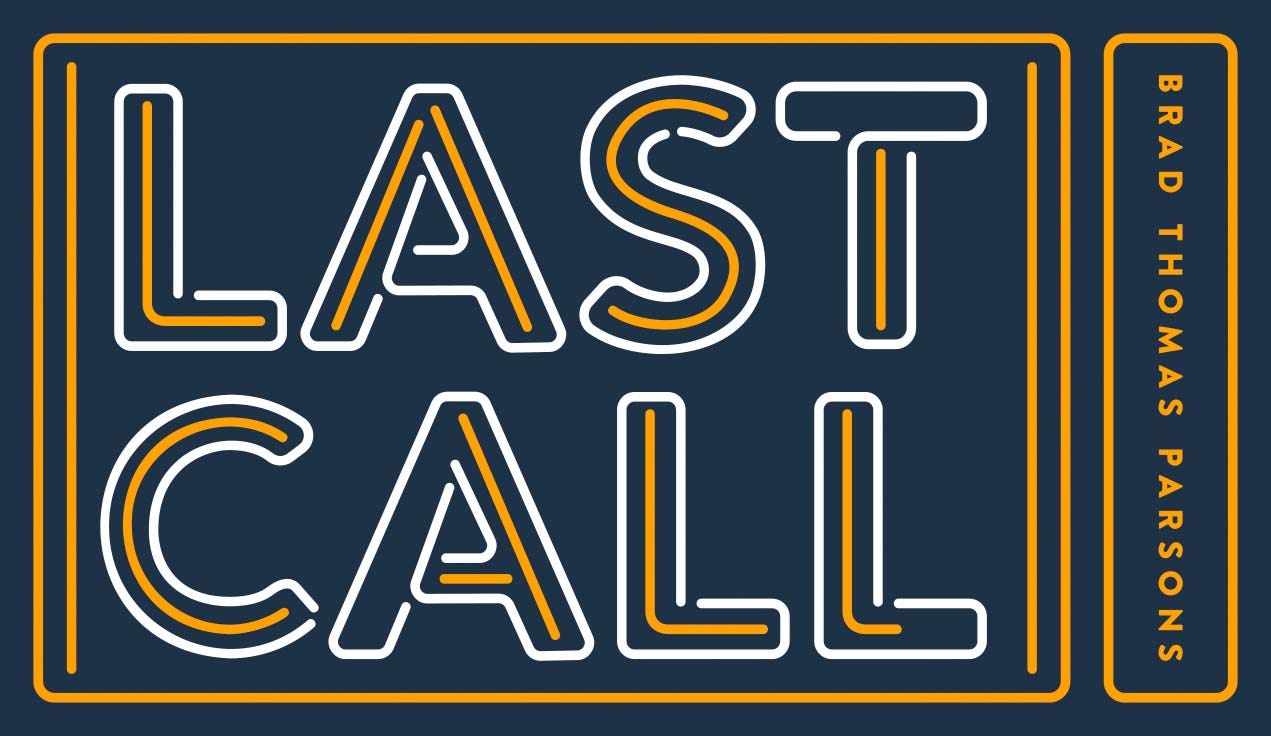
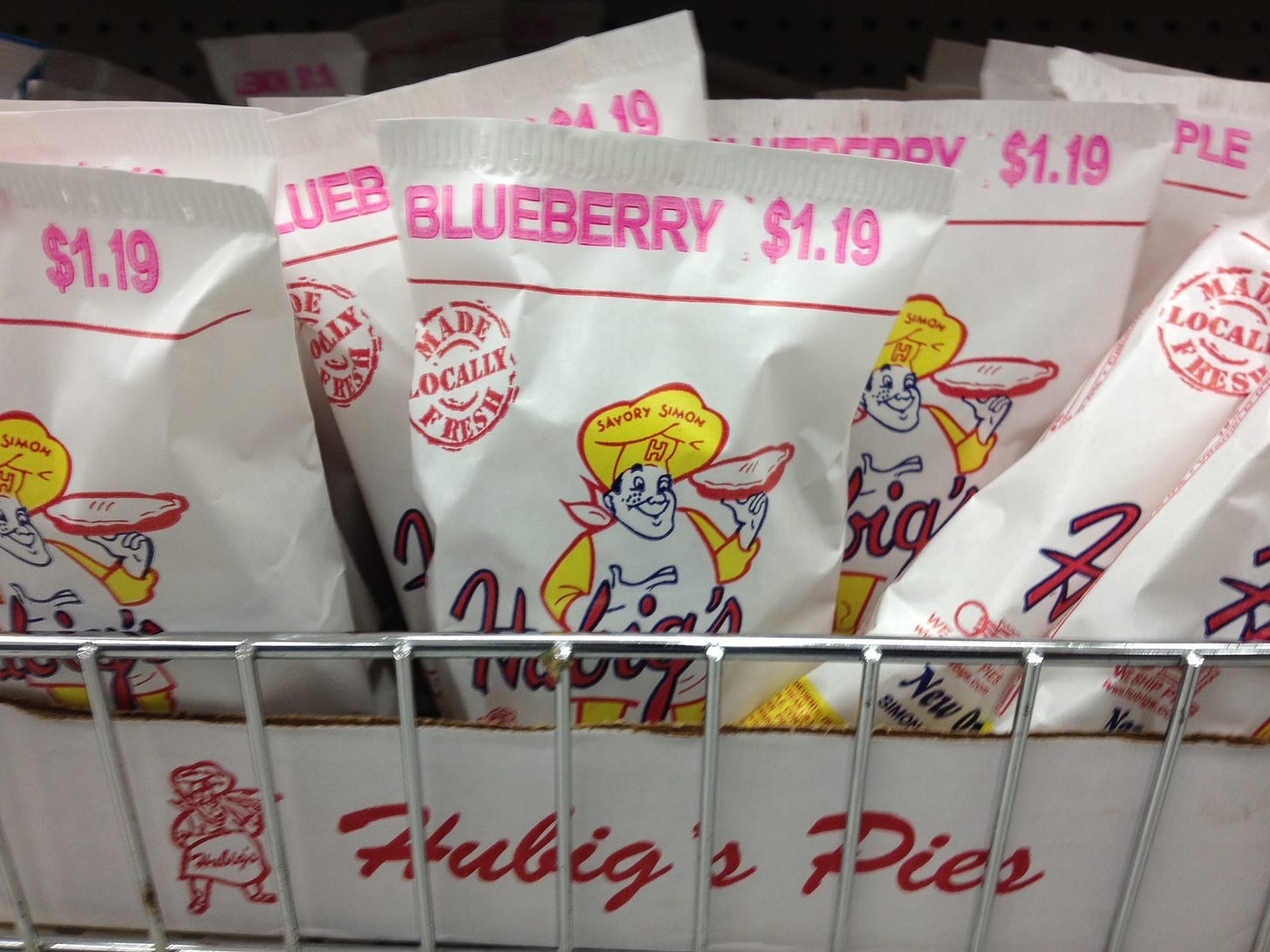
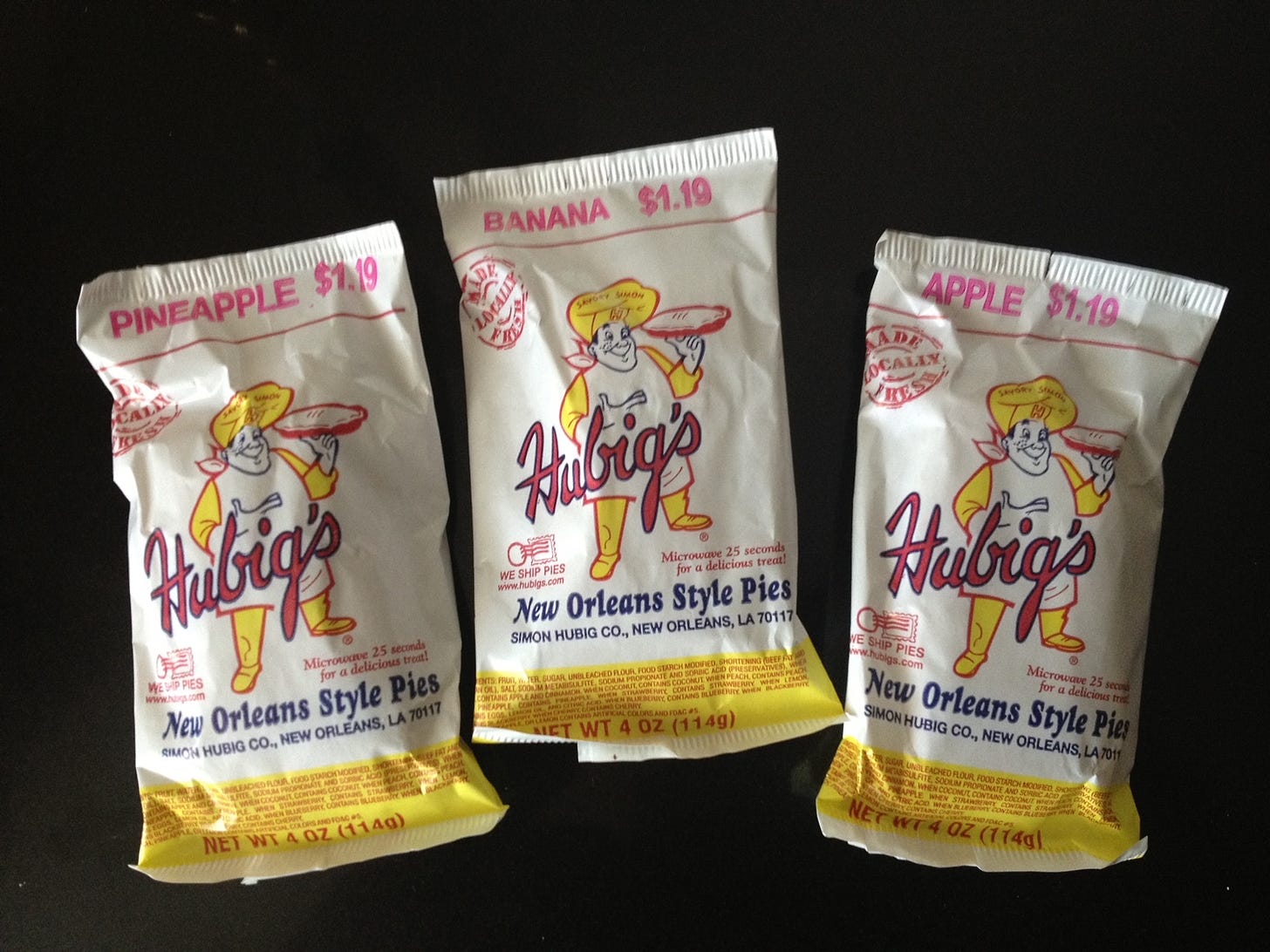
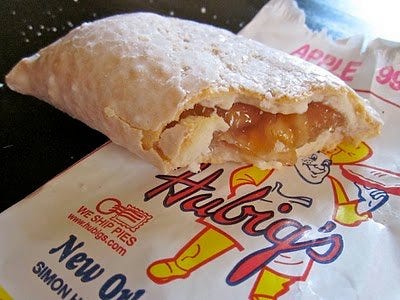
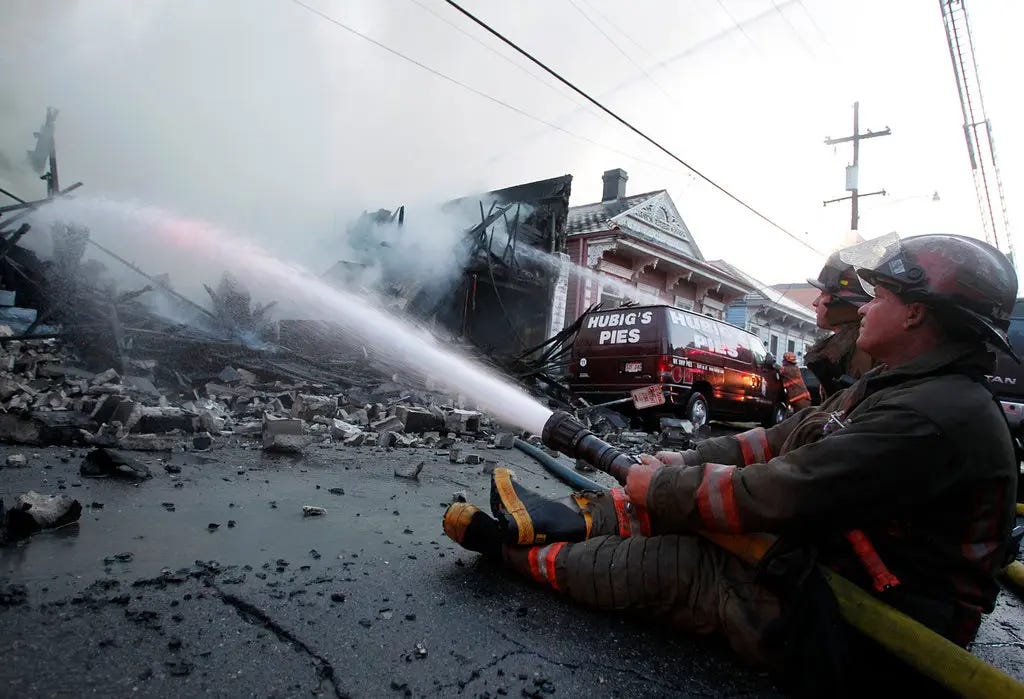
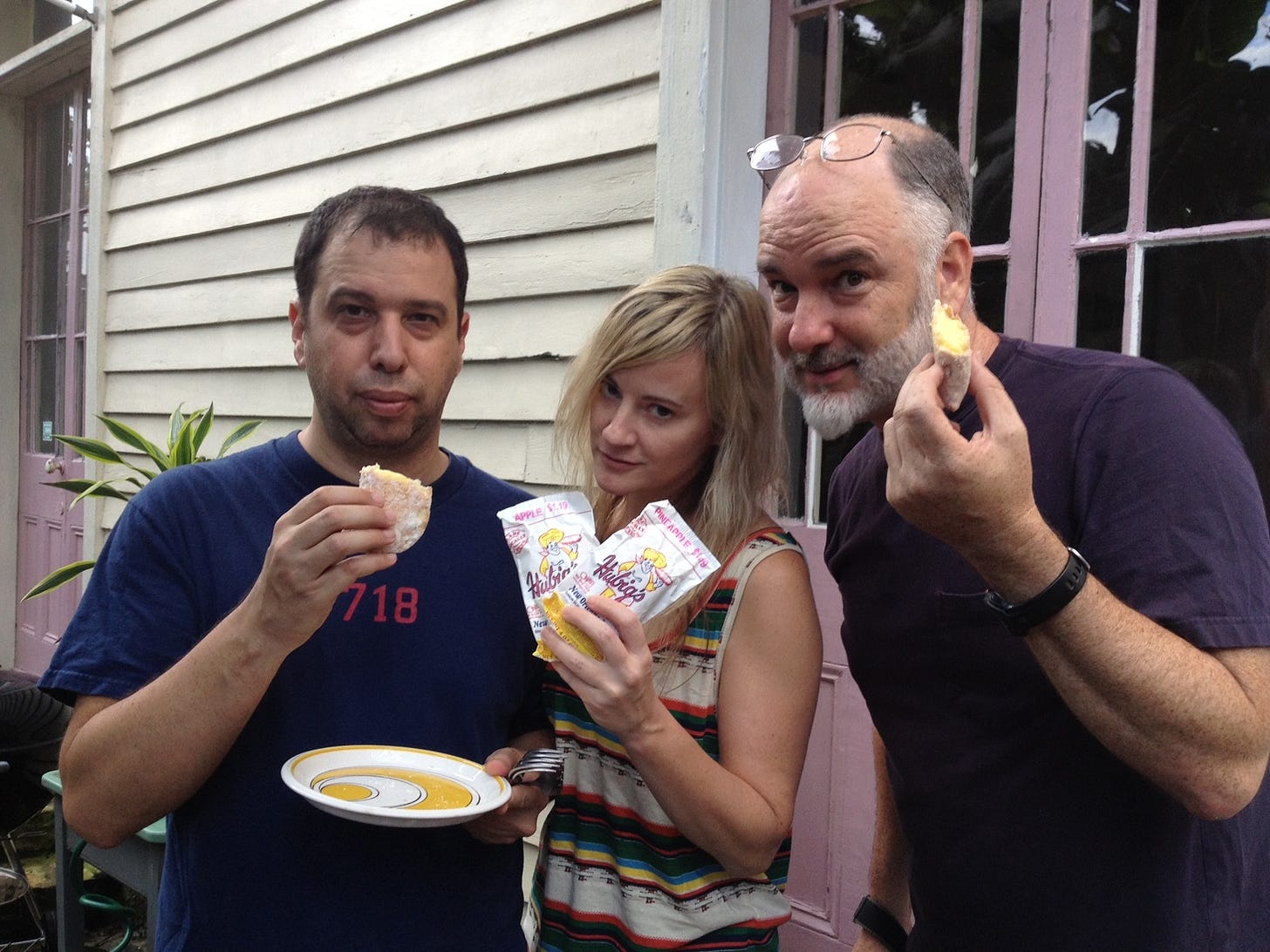
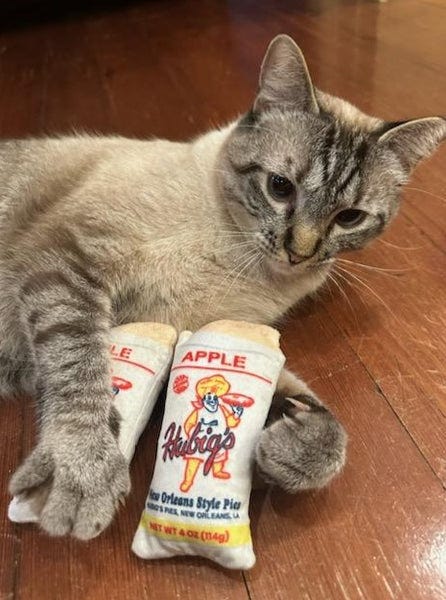
One of my favorites! Thanks for reposting it. And now I want a pie!
Terrific piece! One of life’s greatest pleasures is a Vieux Carré at the Carrousel Bar. To follow that with a meal at Cochon (or Pêche, another Donald Link eatery) is truly gilding the lily. My wife and I attended only one edition of Tales, 15+ years ago, before moving from New Orleans, and thoroughly loved it. Thanks for the memories.